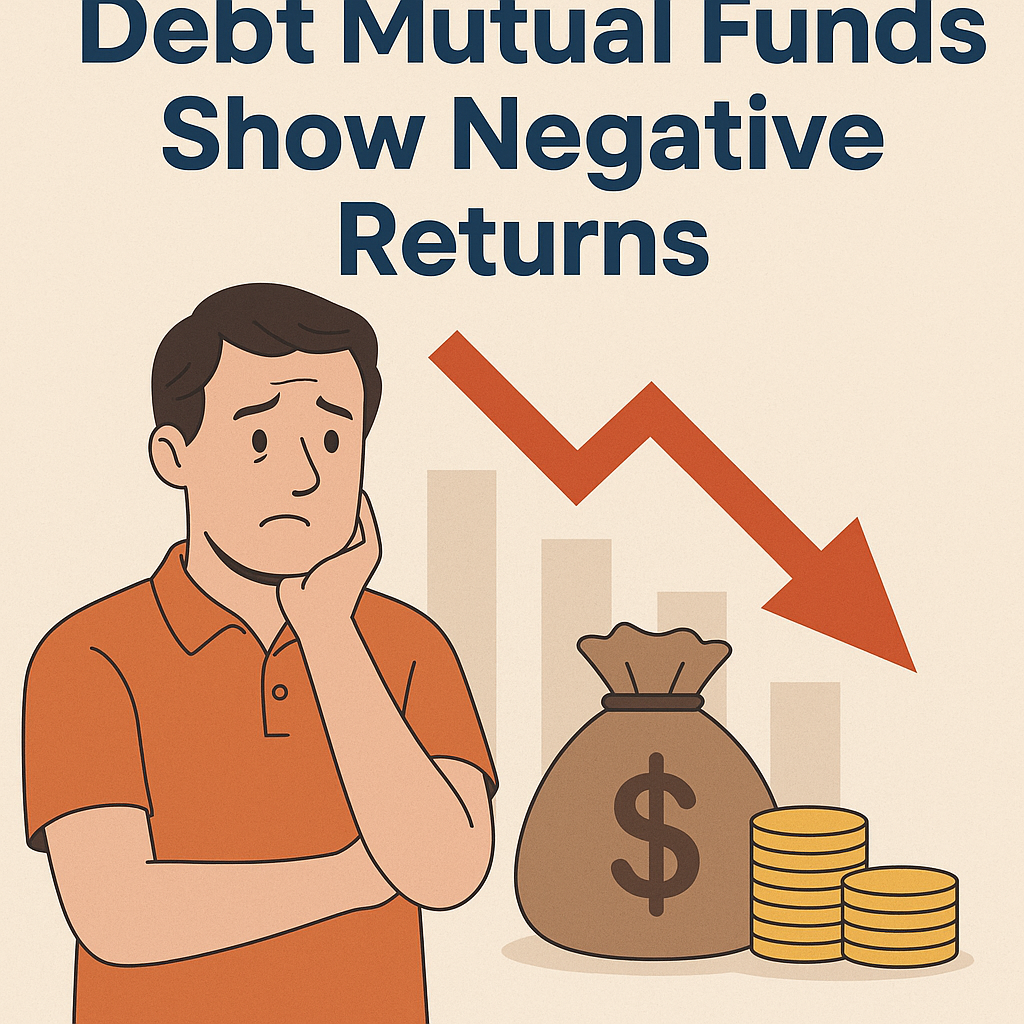What are debt mutual funds and why do they matter to the middle class?
Debt mutual funds invest in fixed-income securities like bonds and government securities. Middle-class investors choose them hoping for safe, stable returns.
But sometimes, expectations are crushed when debt mutual fund negative returns show up in the portfolio.
Are debt mutual funds always safe?
No, they are not risk-free. While they are generally safer than equity funds, debt mutual funds are sensitive to interest rate changes, credit risk, and even market sentiment.
That’s why the dream of stability often turns into anxiety for the average investor.
Why do debt mutual funds show negative returns?
Debt mutual funds show negative returns primarily due to rising interest rates. When rates go up, bond prices fall — dragging down the Net Asset Value (NAV) of your debt fund.
And this reality can feel like betrayal for cautious savers trusting these funds.
How rising interest rates affect your debt mutual fund?
Let’s break it down.
If you invested in a debt fund when interest rates were low, and rates go up later, the value of your bond holdings drops.
That’s when you start seeing debt mutual fund negative returns in your statement.
Is this loss permanent or temporary?
This is the golden question.
The negative return in a debt mutual fund is usually temporary — as bonds mature or markets stabilize, values may recover.
But emotionally, it feels like a punch in the gut, especially when you’ve invested your hard-earned money.
Which types of debt mutual funds are more vulnerable?
Funds holding long-duration bonds suffer more during rate hikes. Gilt funds and dynamic bond funds often carry higher interest rate risk.
Short-term funds or liquid funds usually perform better in such times.
Let’s compare this in a simple table:
| Fund Type | Risk During Rate Hike | Recovery Speed |
|---|---|---|
| Gilt Funds | High | Slow |
| Dynamic Bond Funds | Medium to High | Medium |
| Short Duration | Low | Fast |
| Liquid Funds | Very Low | Very Fast |
Should you panic when you see negative returns in debt funds?
No. Absolutely not.
Negative returns don’t always mean something is broken. It may simply be a market cycle reacting to macroeconomic conditions.
Stay calm. Reacting emotionally can hurt more than the temporary loss itself.
When is the best time to invest in debt mutual funds?
Right after interest rates peak and start falling is usually ideal.
This timing can help you avoid debt mutual fund negative returns and even boost your gains.
But timing markets is tricky — for the middle-class investor, consistency and patience win.
Can you avoid debt mutual fund losses completely?
No investment is completely loss-proof.
But you can minimize risks by:
-
Choosing funds with shorter duration
-
Avoiding credit risk funds if you’re risk-averse
-
Staying invested for the recommended period
What role does inflation play in debt mutual fund returns?
High inflation leads to higher interest rates.
As RBI hikes rates to control inflation, your bond NAVs may fall — leading to those dreaded debt mutual fund negative returns.
So yes, inflation indirectly hurts your portfolio too.
How can you manage the emotional impact of negative returns?
It’s not just about money. It’s about trust, dreams, and stability.
Create a buffer fund. Don’t put everything in one type of mutual fund. Stay diversified and informed.
Talk to a financial advisor if the stress becomes too much. It’s okay to seek help.
Are debt mutual funds still worth it?
Yes, they are.
Despite occasional dips, debt mutual funds still offer better post-tax returns than FDs over the long term — especially for those in higher tax brackets.
It’s a journey. Not every day will be sunny.
Final thoughts: How to emotionally and financially ride the wave?
Understand that even conservative funds can shake you emotionally.
Negative returns in debt mutual funds aren’t the end of the road. They’re just a curve in your financial journey.
Hold on. Time, awareness, and strategy are your greatest allies.
![]()



